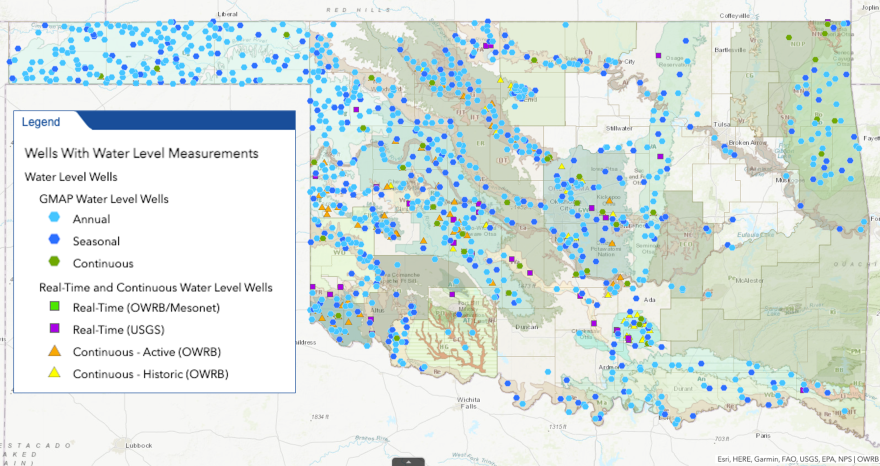Water levels in the Ogallala Aquifer that lies under the Oklahoma panhandle began a steady decline in the late 1970s that’s continued through today.
But in the rest of the state, aquifer levels were mostly rising until the 2000s, when they too started on negative trajectories, according to the New York Times’ data investigation. Many of Oklahoma’s monitoring wells hit all-time recorded lows in the past decade.
That’s due in part to overuse. Demand on aquifers has grown as droughts have shrunk the availability of water in rivers and lakes. And regulations on groundwater use are up to individual states.
In Oklahoma, groundwater permits are issued based on aquifer yields if that information is available. But in parts of the state where no one has yet done the hydrologic surveys needed to calculate those yields, a standard groundwater permit allows a landowner to withdraw enough to cover their entire property in two feet of water each year. And that’s only for use beyond domestic needs, which don’t require a permit.







